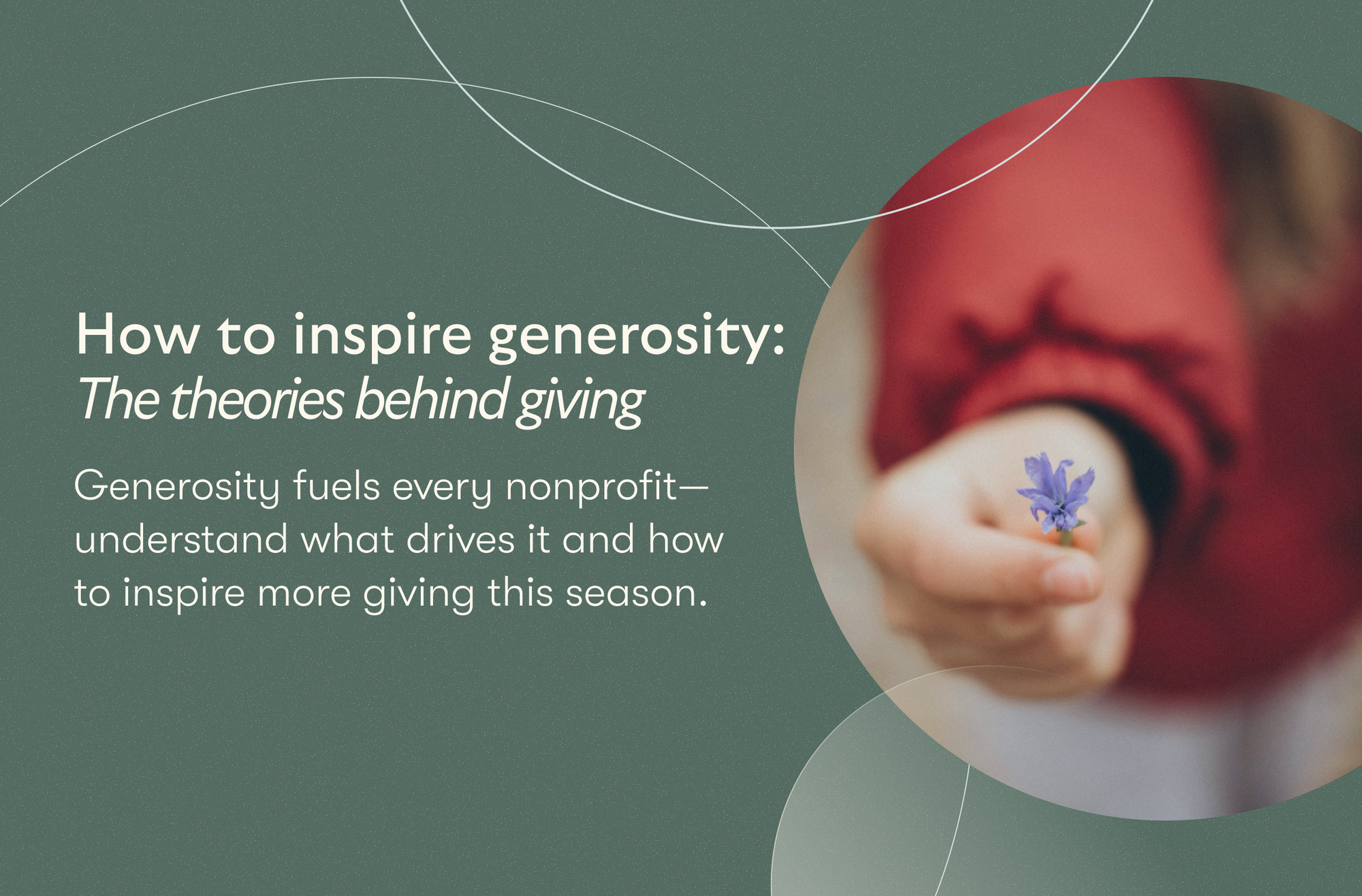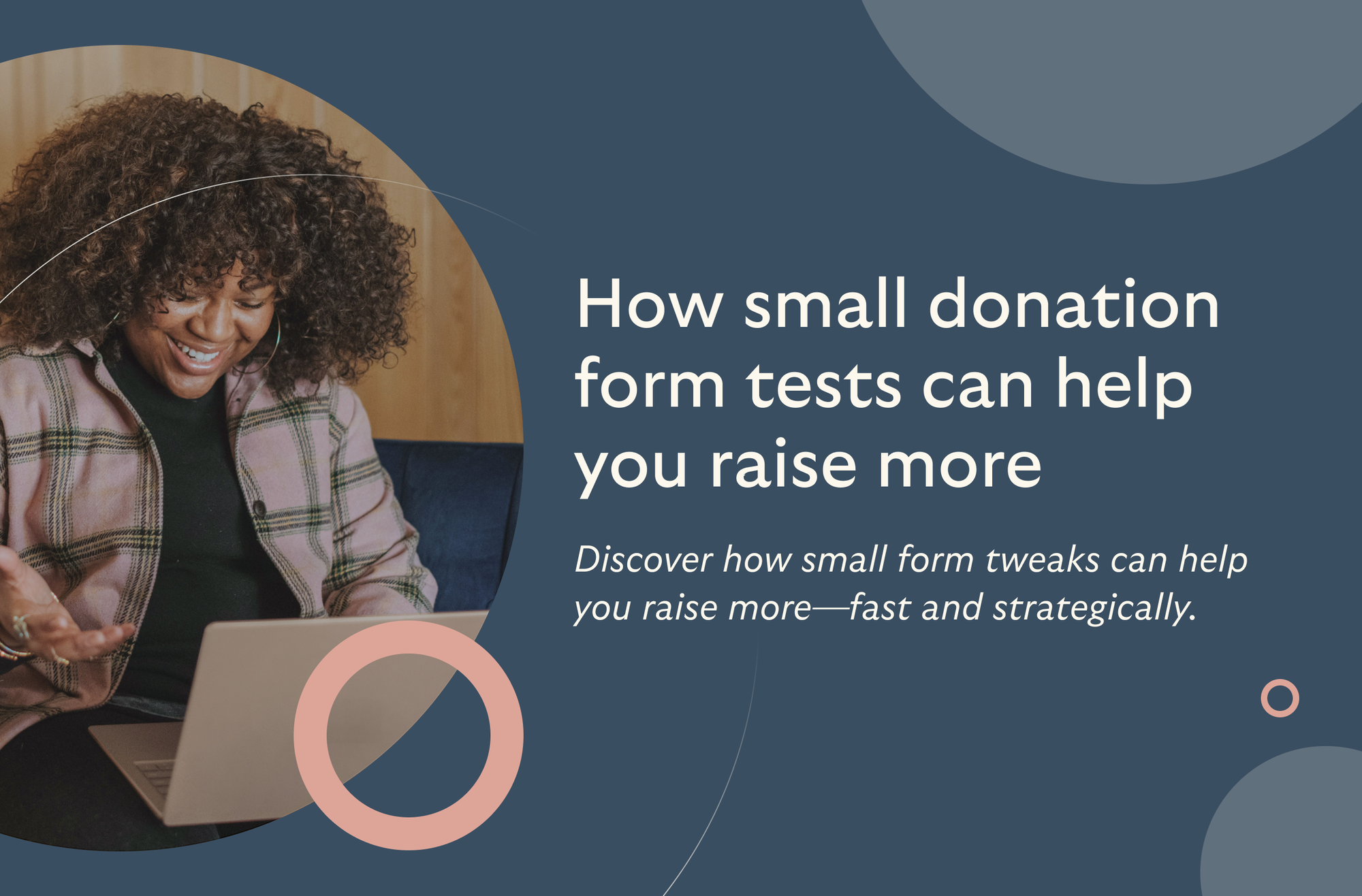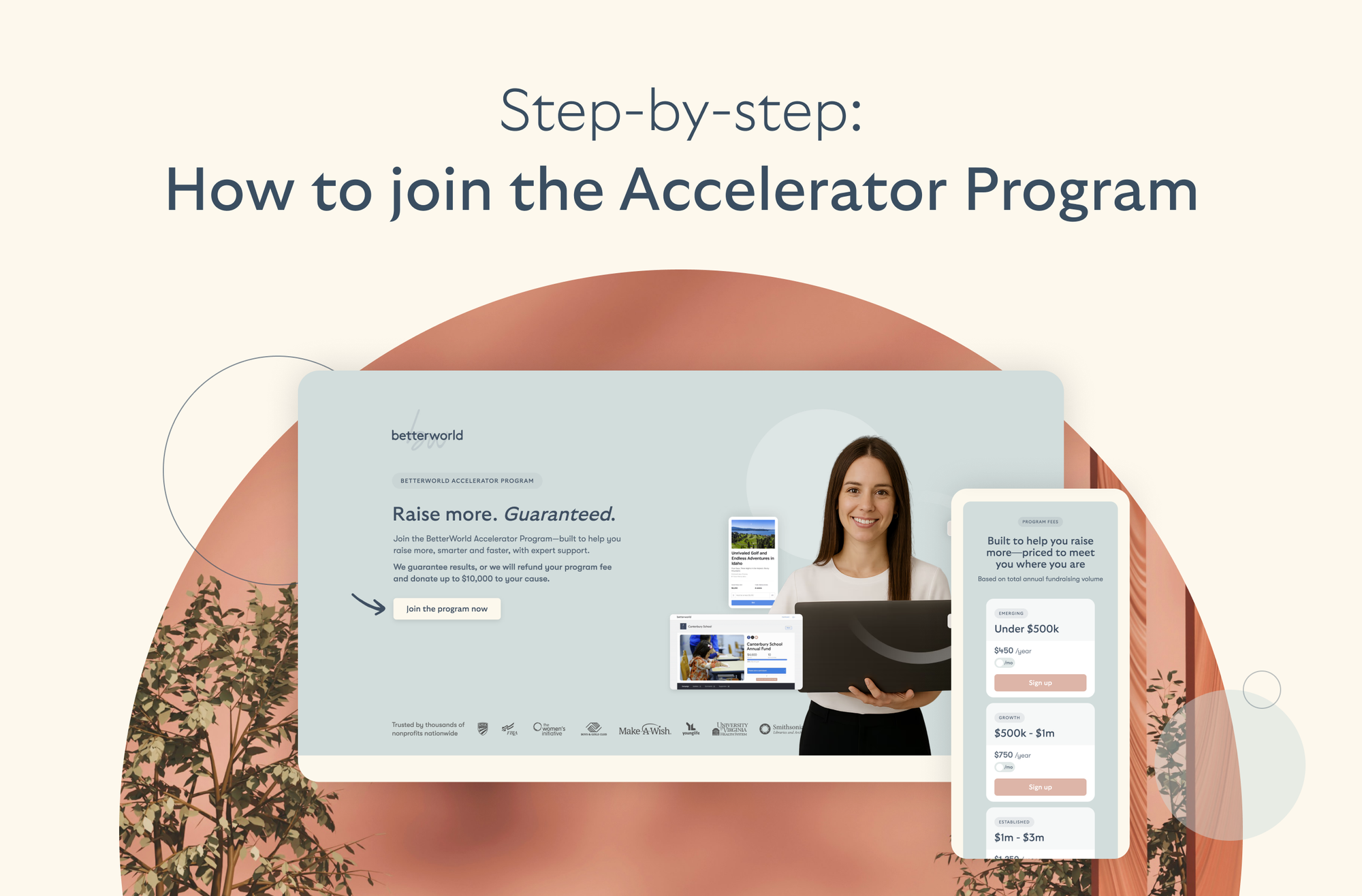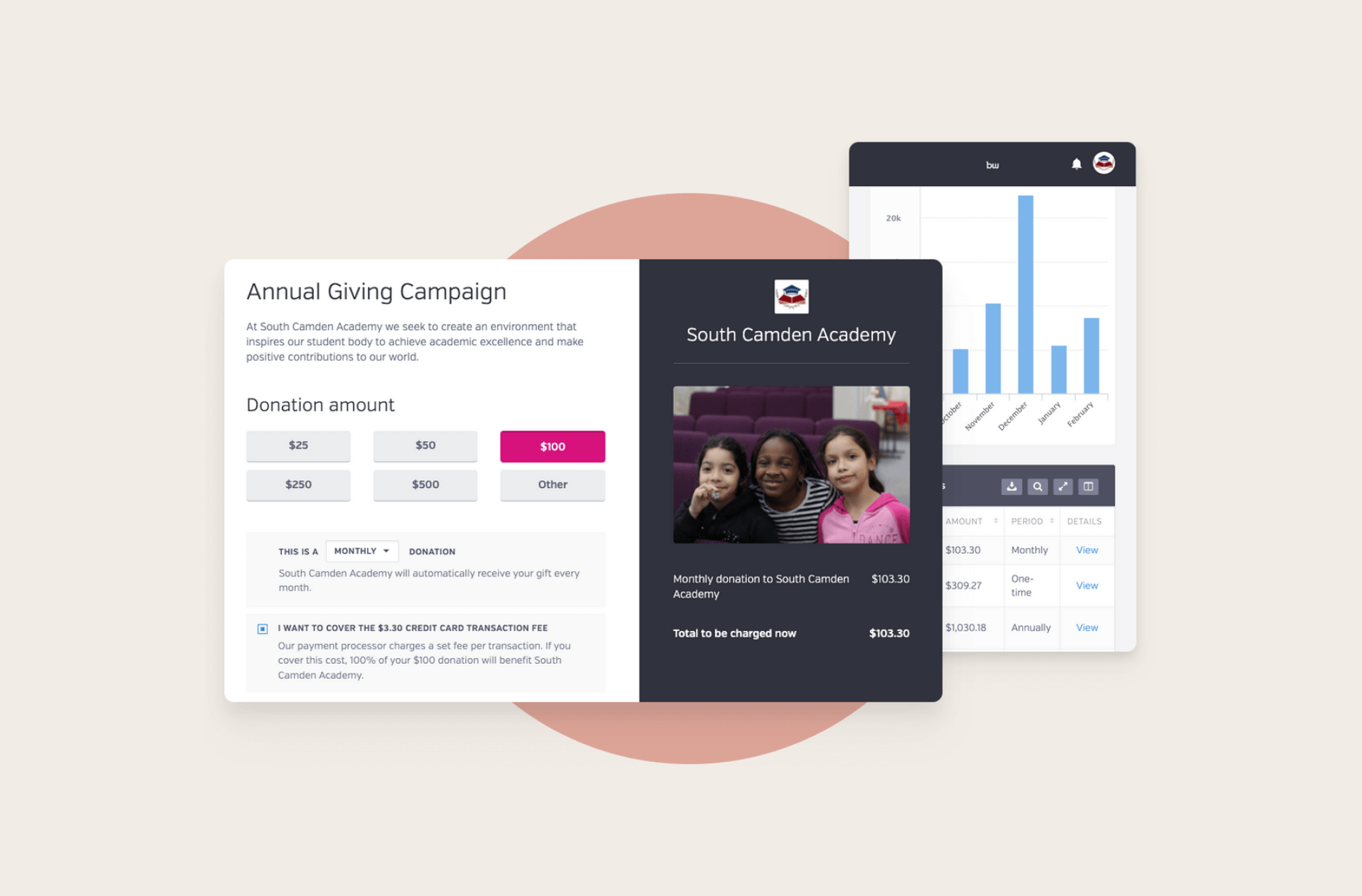Simplify donations with customizable default donation amounts
Streamline your processes and keep online and offline donations in one place
Engage with your donors with automatic updates
Give your donors the ability to donate once, monthly, or annually
The Basics of Prospect Research For Nonprofits
By Whit Hunter

Prospect research is a key step for nonprofits when they're looking for new supporters or donors. It is a process that helps you understand who to talk to, how to reach them, and the best way to ask for their support.
Our blog will guide you through the basics of prospect research, showing you easy and effective ways to find and connect with potential donors. If you're new to this or just want to refresh your skills, we have helpful tips and tricks to help you make your fundraising efforts successful.
What is Prospect Research?
Prospect research is like being a detective for a nonprofit. It means looking for information about people or groups who might give money to the organization.
You try to find out who they are, what they care about, and if they have given money to causes like yours before. It's not just about finding rich people. It's about finding the right people who care about your cause and have the means to support it.
For example, if a nonprofit helps animals, prospect research might involve finding people who love pets and have donated to animal shelters in the past.
Why Prospect Research is Important for Fundraising Success
- Prospect research helps you find the right people who are not only able but also likely to give funds to your cause.
- It allows you to grow your support base by identifying new donors beyond your current network.
- This research can fill in missing details about your donors, making your database more complete and useful.
- By analyzing donors' past giving, you can spot trends that help tweak your fundraising strategies for better results.
- Understanding a donor's business connections and corporate giving programs can uncover matching gift opportunities and more.
Prospect research is a powerful tool that can lead to more funds for your nonprofit, allowing you to make a bigger impact on the world.
Starting with Prospect Research
Here's a guide on how to get started with prospect research.
Identifying Your Fundraising Goals
Your journey into prospect research begins with clarity about your nonprofit's financial needs.
Setting clear, achievable fundraising goals is the first step. These goals can range from supporting specific projects to general operational costs.
By understanding what you need financially, you can better target donors with the capacity and willingness to help you reach these goals.
Understanding Your Ideal Donor Profile
Knowing who your ideal donor is plays a key role in prospect research. It involves looking beyond just the financial capacity to donate.
You'll want to consider factors such as the donor's connection to your cause, their giving history to similar organizations, and personal interests that align with your mission.
An ideal donor profile helps you focus your research efforts on individuals who are not just able but also likely to support your cause passionately.
The Role of Data in Prospect Research
Data is the backbone of effective prospect research. It helps you understand the giving capacity and interests of potential donors. Key data points include real estate ownership, stock holdings, business affiliations, and previous charitable contributions.
Tools and databases are available to help nonprofits access this information, from your own CRM data to specialized prospect research tools like DonorSearch and databases for matching gifts like Double the Donation.
These resources can provide a wealth of information, including philanthropic indicators, affinity indicators, and wealth indicators, which are essential for identifying potential donors
Key Components of Prospect Research
Let's break down the key parts of prospect research.
1. Donor Background Checks
First up, we have donor background checks. This is like getting to know someone better. You look into two main areas:
- Personal backgrounds
It is all about finding out what the donors like, what they do for fun, and who they choose to spend time with. Knowing a donor's interests, hobbies, and groups they're part of can help a nonprofit connect with them on a personal level.
- Professional backgrounds
Here, you're looking at where the donor works, what their job is, and who they know in their industry.
Understanding a donor's professional life can help a nonprofit see how the donor might support them, not just with money but also with connections and expertise.
2. Philanthropic History
Next is philanthropic history. It tells a nonprofit about a donor's giving spirit
- Past giving to your organization
It shows if and how a donor has supported your nonprofit before. It's a clue about their ongoing interest in your cause.
- Giving history to other nonprofits
Seeing where else a donor has given money helps understand what causes they care about. It might also show if they are likely to give big donations.
3. Wealth Screening
Wealth screening is a bit like detective work. Nonprofits use it to figure out:
- Estimating donation capacity
Guessing how much money a donor might be able to give. It helps set realistic expectations.
- Identifying potential major donors
It is also about finding people who might give a lot of money. Knowing who has the means to make big donations can help a nonprofit focus its efforts.
Want to raise more Donations? Try BetterWorld’s Donation Tool for FREE!
4. Engagement History
Last but not least, we have an engagement history. This part is about looking at how the donor has interacted with your nonprofit in the past.
- Past interactions with your organization
Past interactions could be anything from phone calls to meetings. It gives a sense of how involved a donor is.
- Event attendance, volunteer history
Seeing how a donor has participated in events or volunteered gives an idea about their commitment to your cause.
Each of these components plays an important role in helping nonprofits make informed decisions about fundraising.
Tools and Resources for Prospect Research
Here's an overview to help guide you through the process:
Free and Paid Tools Overview
Free resources like LinkedIn and Zillow can offer valuable insights into potential donors' professional networks and real estate holdings, which are indicators of wealth.
Social media platforms, such as LinkedIn, are particularly useful for understanding a prospect's professional background, current and past employers, and network connections.
Zillow can help estimate the market value of a prospect's property, giving clues to their financial capacity.
The Federal Election Commission (FEC) and the Security and Exchange Commission (SEC) filings are also free resources that can reveal political donations and stock holdings, respectively, offering insights into a prospect's interests and financial resources.
For more specialized needs, tools like Freewill and AlumniFinder provide non-cash gift opportunities and data-driven insights for fundraising, though pricing for these services varies and may require contacting the provider.
Databases and Software Recommendations
- DonorSearch and Instrumentl are highly recommended for their extensive databases that include private, corporate, and government funders, offering detailed reports and grant tracking capabilities. These platforms are particularly valuable for nonprofits looking to identify donors with a high capacity and affinity for their cause.
- Double the Donation is known for identifying matching gift opportunities, enabling nonprofits to potentially double their donations through corporate matching programs. The service ranges from $299 to $499 per year, with API access starting at $1,999 per year.
- Dataro uses AI and machine learning to analyze donation and engagement data, providing propensity scores and predictions for each donor. This technology can significantly improve fundraising efforts by identifying the most promising donors for future campaigns.
- IntellectSpace offers visual mapping tools to help nonprofits discover new relationships in their existing databases, helping in the identification of prospective donors through relationship mapping.
- For a more comprehensive approach, Windfall provides modern wealth intelligence, delivering up-to-date insights into affluent constituents to help prioritize, segment and engage donors effectively.
Using these tools and databases, nonprofits can significantly improve their prospect research effort
Tips for Effective Prospect Research
During prospect research, you should be careful about a few key things.
Keeping Data Organized and Updated
One of the first steps in ensuring your prospect research is effective is keeping your data organized and updated. It involves regularly checking your donor database for accuracy, removing duplicates, and updating contact information.
Tools like TouchPoints specialize in making sure a nonprofit’s database is accurate by updating addresses, phone numbers, email addresses, and more. This continuous update is crucial for maintaining the effectiveness of your prospect research.
Respecting Privacy and Ethical Considerations
When conducting prospect research, it's vital to respect privacy and adhere to ethical considerations.
Always obtain information through publicly available sources without intruding on personal privacy. Use social media platforms and public records respectfully, understanding that just because information can be found doesn't mean it should be used without consideration of privacy concerns.
Websites like LinkedIn, ProPublica’s Nonprofit Explorer, and Zillow provide valuable insights while respecting individuals' privacy.
Regularly Reviewing and Adjusting Your Strategy
Prospect research is not a one-time task but a continuous process that requires regular reviews and adjustments to your strategy.
Just like the weather can change suddenly at sea, the fundraising environment can change quickly too. New technologies, changes in donor interests, and shifts in the economic landscape can all impact your fundraising efforts.
Regular reviews help you adapt to these changes, ensuring your strategy remains effective. As you use your prospect research strategy, you'll learn what works and what doesn't.
Maybe you find that social media isn't as helpful for finding new donors as you thought, but attending community events is. Regularly adjusting your strategy based on these lessons will make your efforts more successful over time.
Unlocking the Future with Prospect Research
Prospect research is like a key that unlocks new doors for your nonprofit.
The right approach to prospect research can reveal opportunities you never knew existed. Maybe there's a community of potential donors who are passionate about a specific aspect of your work but haven't connected with your nonprofit yet.
Or perhaps there are businesses looking for charitable partnerships that align with your mission. By doing your homework, you can find these matches and start meaningful conversations.
So, explore prospect research with a commitment to learning, a focus on relationships, and a dedication to ethical practices. The future is bright, and with the right approach to prospect research, it's within your grasp.

Join 100,000+ amazing nonprofits, organizations, and fundraisers on BetterWorld

Let our FREE fundraising tools help you raise more funds with less effort








